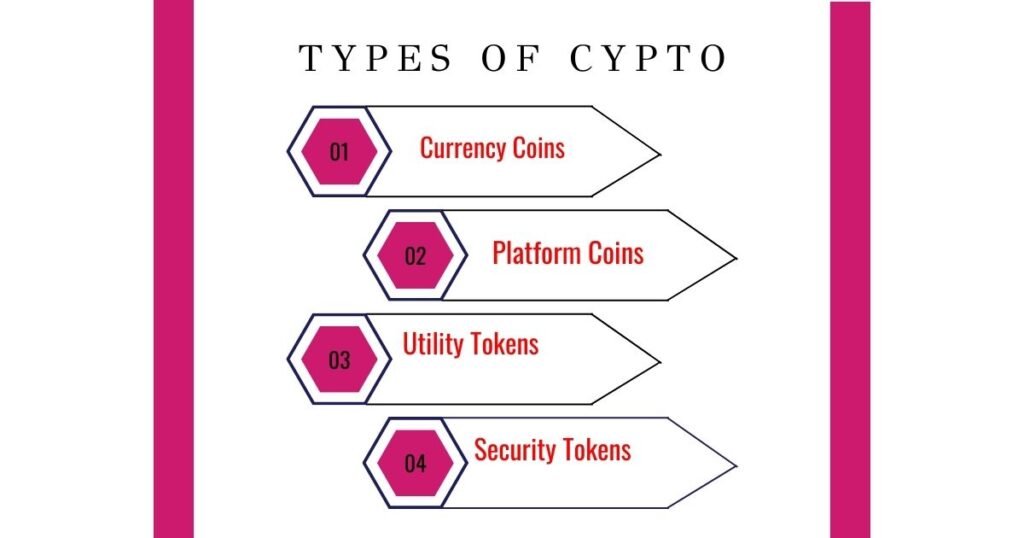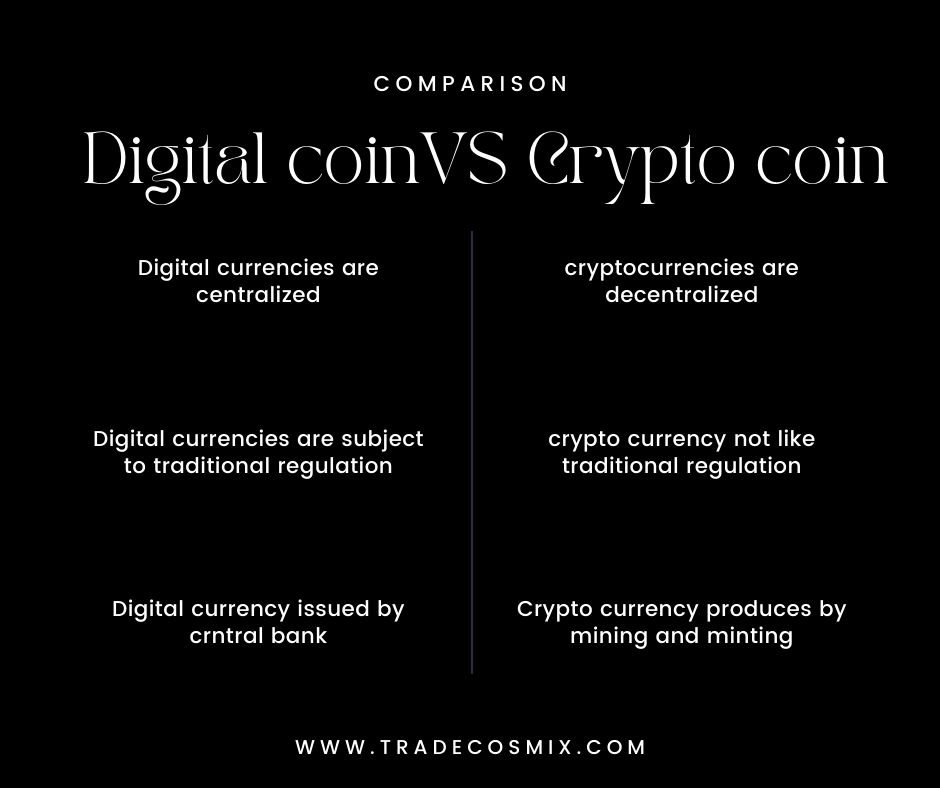Introduction
In our rapidly evolving financial ecosystem, cryptocurrencies have emerged as a disruptive force, challenging traditional models of finance, governance, and even the concept of money itself. As we mentioned in our earlier discussion, various trends and shifts define the cryptocurrency landscape today. This extended blog post continues our deep dive, covering further key trends, future growth potential, and important implications for the industry.
Tokenization of Real-world Assets
Tokenization involves converting rights to an asset into a digital token on a blockchain. This process is opening doors to fractional ownership and bringing liquidity to traditionally illiquid markets, like real estate and art.
DAOs (Decentralized Autonomous Organizations)
DAOs are entities that operate without centralized control, governed by smart contracts and consensus among its members. These organizations signify a fundamental shift in how businesses can be structured and managed.
Yield Farming and Liquidity Mining
These are sophisticated DeFi practices where users can generate returns by lending their assets or providing liquidity. Such mechanisms are attracting both seasoned and new investors, contributing to the DeFi boom.
Privacy Coins
While cryptocurrencies like Bitcoin offer more privacy compared to traditional financial transactions, they are not entirely anonymous. Privacy coins like Monero and Zcash are designed to offer completely anonymous transactions.
Artificial Intelligence and Machine Learning
Blockchain and AI are starting to intersect in meaningful ways. Machine learning algorithms can help predict price changes in cryptocurrencies, while blockchain can provide AI models with more transparent and immutable data sets.
Future Implications and Growth Areas
Cross-chain Technologies
Transferring assets and value across different blockchains is becoming crucial. Cross-chain technologies aim to solve this, creating a web of interconnected blockchains.
Social and Economic Inclusion
Cryptocurrencies can bring financial services to billions of people without access to traditional banking. This potential for social inclusion could be transformative.
Ethical and Sustainable Investing
Investors are increasingly focusing on sustainability. New cryptocurrencies and blockchain projects focusing on green technology and ethical finance are gaining attention.
Quantum Computing
While it poses a potential security risk to existing cryptographic techniques, quantum computing also offers opportunities for more secure, efficient cryptographic systems.
Central Bank Digital Currencies (CBDCs)
Central banks worldwide are exploring the possibility of issuing their digital currencies, which could coexist with other cryptocurrencies or even provide a regulated alternative.
Takeaways for Investors and Enthusiasts
Diversification
The diversity of cryptocurrency assets and blockchain technologies allows for portfolio diversification like never before. However, it’s essential to do thorough research or consult a financial advisor.
Risk Management
As lucrative as it might seem, the cryptocurrency market is highly volatile. Risk management strategies like only investing money you can afford to lose are crucial.
Keeping Up With Rapid Changes
The fast-paced nature of the cryptocurrency landscape requires constant learning. Following trustworthy news sources, market analyses, and educational content is a must.
Demystifying Cryptocurrencies: An Overview of the 4 Main Types
With thousands of different cryptocurrencies in existence, it can be overwhelming to navigate this diverse landscape. To simplify matters, let’s break down the four main types of cryptocurrencies, each with its unique characteristics and purposes.

1. Currency Coins (Cryptocurrencies)
Currency coins, often referred to as cryptocurrencies in the truest sense, were the pioneers that kickstarted the digital currency revolution. Bitcoin, the first and most well-known cryptocurrency, falls into this category. These coins are primarily designed to function as mediums of exchange, allowing for peer-to-peer transactions without the need for intermediaries like banks.
Other examples of currency coins include Litecoin, Bitcoin Cash, and Dash. They all share common features such as decentralized control, secure transactions through cryptography, and limited supply. Their main focus is on providing an alternative form of currency that can be used for everyday transactions.
2. Platform Coins
Platform coins are the foundation of blockchain ecosystems that enable the creation of decentralized applications (DApps) and smart contracts. Ethereum is the most prominent example of a platform coin. Ethereum’s blockchain not only supports its cryptocurrency, Ether (ETH), but also acts as a platform for developers to build various applications and execute self-executing contracts.
These coins have a dual role: serving as a form of value within their respective ecosystems and powering the execution of complex operations on their platforms. Other platform coins include Binance Coin (BNB) and Cardano (ADA), each catering to different use cases and functionalities.
3. Utility Tokens
Utility tokens are designed to provide access to specific features or services within a blockchain-based project. They act as licenses or tickets to access functionalities within a DApp or platform. Think of them as tokens required to use particular services within a larger ecosystem.
For instance, Filecoin’s token (FIL) grants users access to its decentralized file storage network. Similarly, Chainlink (LINK) is used to access data and services from external sources, enabling smart contracts to interact with the outside world seamlessly.
4. Security Tokens
Security tokens represent ownership or shares in real-world assets, similar to traditional securities. These tokens are subject to regulatory frameworks, as they often involve ownership in companies, real estate, or other tangible assets.
Security tokens provide increased transparency, fractional ownership, and potential liquidity for traditionally illiquid assets. They bridge the gap between traditional finance and the digital world. Examples of security tokens include tZERO and Polymath.
Understanding the types of cryptocurrencies is crucial for anyone entering the world of digital assets. From the pioneering currency coins to the complex utility and security tokens, each type serves a specific purpose within the broader blockchain ecosystem. Whether you’re a casual observer or an aspiring investor, grasping these distinctions will empower you to navigate the fascinating realm of cryptocurrencies with confidence.
Digital Currency vs. Cryptocurrency: Unveiling the Differences
In the ever-evolving landscape of finance and technology, the terms “digital currency” and “cryptocurrency” are often used interchangeably, leading to confusion. However, these terms represent distinct concepts that play unique roles in our digital economy. In this article, we’ll dive into the differences between digital currency and cryptocurrency, shedding light on their characteristics, use cases, and implications.
Understanding Digital Currency
Digital currency is a broad term encompassing any form of currency available in digital or electronic form. This includes both digital representations of traditional fiat currencies, such as digital dollars or digital euros, and digital assets that function similarly to traditional money. The crucial aspect here is that digital currencies are centralized and regulated by traditional financial institutions, usually central banks or governments.
These digital representations of fiat currencies aim to provide convenient electronic alternatives to physical cash. They facilitate online transactions, electronic payments, and peer-to-peer transfers within existing financial systems. Digital currencies are typically subject to traditional banking regulations and policies, including anti-money laundering (AML) and know your customer (KYC) requirements.
Examples of digital currencies include central bank digital currencies (CBDCs), which are digital versions of a country’s official currency, issued and regulated by its central bank. China’s digital yuan and the proposed digital dollar in the United States are examples of CBDCs in development
Deciphering Cryptocurrency
Cryptocurrency, on the other hand, is a subset of digital currency that operates on decentralized blockchain technology. Unlike digital currencies, cryptocurrencies are not issued or regulated by any central authority. Instead, they rely on cryptographic techniques to secure transactions and control the creation of new units.
The most famous cryptocurrency, Bitcoin, kickstarted the movement in 2009. Cryptocurrencies are not tied to any physical asset or traditional currency, and their value is determined by market supply and demand dynamics. They offer features like decentralization, immutability, and pseudonymity, which make them attractive for various use cases beyond traditional finance.
Examples of cryptocurrencies include Bitcoin (BTC), Ethereum (ETH), Ripple (XRP), and Litecoin (LTC). Each cryptocurrency operates on its blockchain, with specific features and use cases.
Key Differences at a Glance

Centralization vs. Decentralization: Digital currencies are centralized, controlled by traditional financial institutions or governments, while cryptocurrencies are decentralized and operate on distributed networks.
Regulation: Digital currencies are subject to traditional financial regulations, while cryptocurrencies often exist in regulatory gray areas, with varying degrees of regulation depending on the jurisdiction.
Technology: Digital currencies rely on existing electronic banking systems, while cryptocurrencies use blockchain technology for security and validation.
Creation: Digital currencies are typically created and issued by central banks or governments, while cryptocurrencies are mined (proof-of-work) or minted (proof-of-stake) by participants in the network.
Anonymity: Digital currency transactions may require identification and verification, while cryptocurrency transactions can offer varying degrees of pseudonymity.
In summary, while both digital currency and cryptocurrency operate in the digital realm, they are distinct concepts with different purposes, mechanisms, and implications. Digital currencies are modern forms of traditional money regulated by central authorities, facilitating electronic transactions within existing financial frameworks. Cryptocurrencies, on the other hand, leverage blockchain technology to create decentralized digital assets that offer unique features and use cases.
Understanding the differences between these two concepts is essential for anyone interested in navigating the evolving financial landscape. Whether you’re exploring the potential of central bank digital currencies or venturing into the exciting world of cryptocurrencies, this knowledge will serve as a solid foundation for making informed decisions
Evolution of Cryptocurrency Development
The development of cryptocurrency has been a remarkable journey that has reshaped our understanding of finance, technology, and the very concept of money. What began as an experimental digital currency has evolved into a thriving ecosystem of diverse cryptocurrencies, each with its unique features and use cases. In this article, we’ll trace the development of cryptocurrency from its inception to its current state, highlighting key milestones along the way.

Genesis of Cryptocurrency: Bitcoin’s Emergence
The birth of cryptocurrency can be traced back to the enigmatic figure known as Satoshi Nakamoto, who introduced Bitcoin in 2009. Bitcoin marked a revolutionary departure from traditional financial systems. It introduced the concept of a decentralized digital currency, operating on a peer-to-peer network secured by cryptography. Bitcoin’s underlying technology, blockchain, ensured transparency, security, and immutability of transactions.
Early Developments and Altcoins
Following the success of Bitcoin, developers began experimenting with variations of the technology, leading to the emergence of “altcoins” or alternative cryptocurrencies. Litecoin (LTC) was one of the earliest altcoins, introduced in 2011 as a “silver to Bitcoin’s gold.” Litecoin aimed to offer faster transaction confirmation times and a different hashing algorithm.
The subsequent years witnessed a surge in altcoin creations, each offering distinct features and functionalities. Namecoin (NMC) introduced the concept of decentralized domain registration, while Ripple (XRP) focused on facilitating real-time cross-border payments.
Era of Smart Contracts: Ethereum’s Impact
While Bitcoin primarily focused on being a digital currency, Ethereum, launched in 2015 by Vitalik Buterin, introduced a groundbreaking feature: smart contracts. These self-executing contracts enabled developers to create decentralized applications (DApps) and execute complex agreements on the blockchain. Ethereum’s introduction of the Initial Coin Offering (ICO) fundraising model further fueled the growth of the cryptocurrency space.
Proliferation of Use Cases
As the technology matured, cryptocurrencies began to explore various use cases beyond digital payments. Privacy-focused cryptocurrencies like Monero (XMR) aimed to enhance anonymity in transactions, while EOS (EOS) focused on scalability and DApp development. Stellar (XLM) aimed to facilitate affordable cross-border payments and financial inclusion, particularly in developing countries
DeFi and Beyond: Current Developments
In recent years, one of the most significant developments has been the rise of Decentralized Finance (DeFi). DeFi platforms offer services such as lending, borrowing, and trading, all conducted on decentralized networks without intermediaries. These platforms utilize smart contracts to automate financial processes, eliminating the need for traditional banks.
Moreover, the concept of Non-Fungible Tokens (NFTs) has gained immense popularity. NFTs represent ownership of unique digital items like art, music, and collectibles on the blockchain. This innovation has breathed new life into the entertainment and creative
Conclusion
The cryptocurrency landscape is far from static; it is a dynamic, rapidly evolving space that offers a plethora of opportunities and risks. From DeFi and NFTs to DAOs and privacy coins, the sector is brimming with innovations that promise to redefine our understanding of finance, governance, and social structures. Whether you’re an investor, a technophile, or merely curious, understanding these trends will prepare you for what promises to be an exhilarating ride into the future of digital assets.



Leave a comment